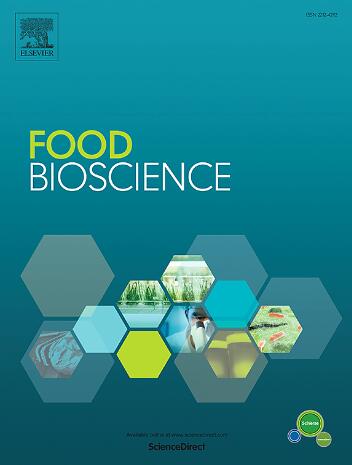Cinnamaldehyde nanoemulsion disrupts Listeria monocytogenes biofilms: Metabolomics reveals dual inhibition and removal mechanisms
IF 5.9
1区 农林科学
Q1 FOOD SCIENCE & TECHNOLOGY
引用次数: 0
Abstract
To address the persistent colonization of Listeria monocytogenes (L. monocytogenes) biofilms on food processing surfaces, which poses critical food safety risks, this study investigated the multi-target antibiofilm mechanism of cinnamaldehyde nanoemulsion (CAN) based on its previously established efficacy. Results demonstrated that CAN compromised membrane integrity, increasing intracellular conductivity while facilitating protein and nucleic acid leakage. It concurrently suppressed adenosine triphosphate (ATP) synthesis and accelerated reactive oxygen species (ROS) accumulation, ultimately triggering ion imbalance and metabolic homeostasis collapse. Furthermore, CAN significantly reduced L. monocytogenes motility, enhanced surface hydrophobicity, and inhibited extracellular polymeric substance (EPS) secretion, thereby disrupting biofilm assembly. The sharp decline in viable biofilm cells critically impaired structural recovery. Metabolomics further revealed that CAN inhibited initial adhesion through targeted suppression of fatty acid metabolism and teichoic acid biosynthesis while disrupting biofilm maintenance and repair via interference with ABC transporter functionality and D-amino acid metabolism. This study elucidated the mechanism by which CAN inhibited and removed biofilms from a metabolomics perspective, providing novel insights for biofilm control strategies in the food industry.
肉桂醛纳米乳破坏单核增生李斯特菌生物膜:代谢组学揭示了双重抑制和去除机制
针对单核增生李斯特菌(L. monocytogenes)生物膜在食品加工表面的持续定植,构成严重的食品安全风险,本研究在肉桂醛纳米乳(CAN)已有药效的基础上,探讨了CAN的多靶点抗生物膜机制。结果表明,CAN破坏膜完整性,增加细胞内电导率,同时促进蛋白质和核酸泄漏。同时抑制三磷酸腺苷(ATP)合成,加速活性氧(ROS)积累,最终引发离子失衡和代谢稳态崩溃。此外,CAN显著降低单核增生乳杆菌的运动能力,增强表面疏水性,抑制细胞外聚合物(EPS)的分泌,从而破坏生物膜的组装。活性生物膜细胞的急剧下降严重损害了结构恢复。代谢组学进一步发现,CAN通过靶向抑制脂肪酸代谢和苔藻酸的生物合成来抑制初始粘附,同时通过干扰ABC转运蛋白功能和d -氨基酸代谢来破坏生物膜的维持和修复。本研究从代谢组学的角度阐明了CAN抑制和去除生物膜的机制,为食品工业的生物膜控制策略提供了新的见解。
本文章由计算机程序翻译,如有差异,请以英文原文为准。
求助全文
约1分钟内获得全文
求助全文
来源期刊

Food Bioscience
Biochemistry, Genetics and Molecular Biology-Biochemistry
CiteScore
6.40
自引率
5.80%
发文量
671
审稿时长
27 days
期刊介绍:
Food Bioscience is a peer-reviewed journal that aims to provide a forum for recent developments in the field of bio-related food research. The journal focuses on both fundamental and applied research worldwide, with special attention to ethnic and cultural aspects of food bioresearch.
 求助内容:
求助内容: 应助结果提醒方式:
应助结果提醒方式:


